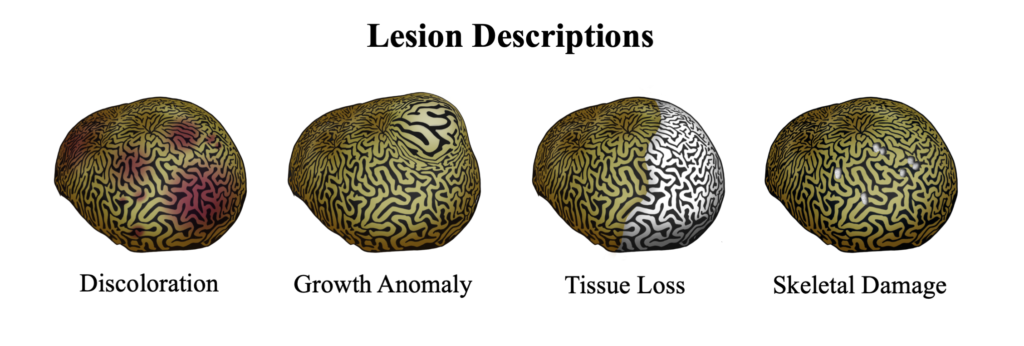 Official websites use .gov
A .gov website belongs to an official government organization in the United States. Official websites use .gov
A .gov website belongs to an official government organization in the United States. |
 Secure .gov websites use HTTPS
A lock or https:// means you’ve safely connected to the .gov website. Share sensitive information only on official, secure websites. Secure .gov websites use HTTPS
A lock or https:// means you’ve safely connected to the .gov website. Share sensitive information only on official, secure websites. |
Solutions today for reefs tomorrow
The links on this page will allow the display of a photograph illustrating the term selected (or clicked on).






Coral diseases are diagnosed through a tiered process that begins with a field lesion assessment, which describes the gross lesion appearance using the terms listed above without the need for sampling. You can download a field lesion assessment form here. After this initial assessment, it may be possible to to identify a common field name that describes the disease in a particular coral and apply the same terminology to other corals (regardless of species) with similar gross visible signs using the Coral ID Decision Tree.